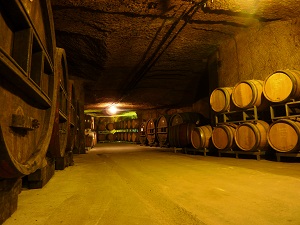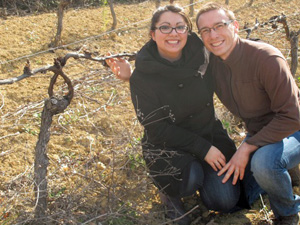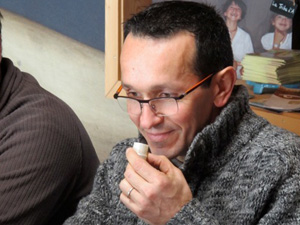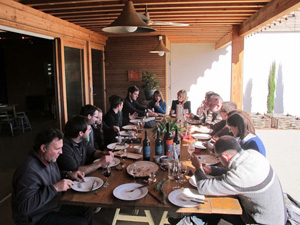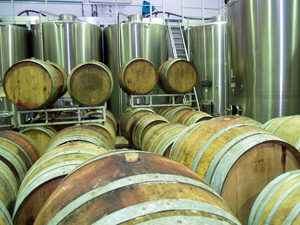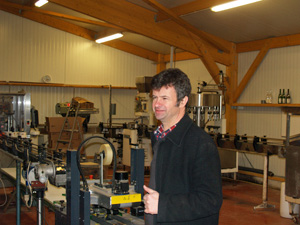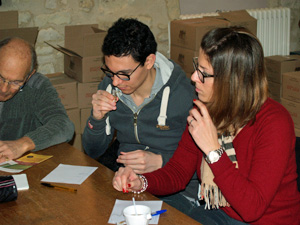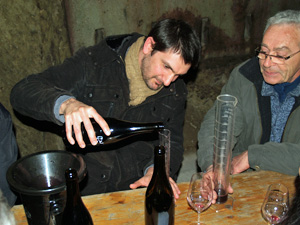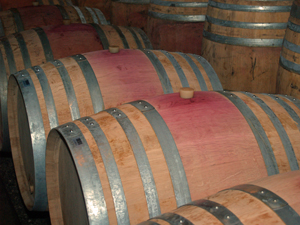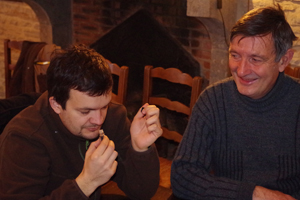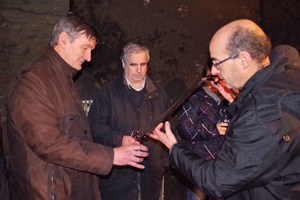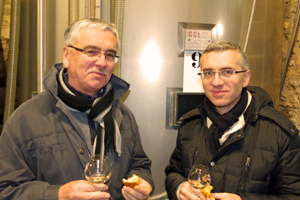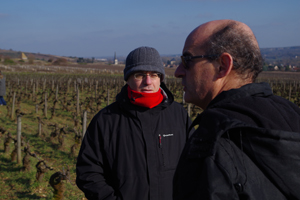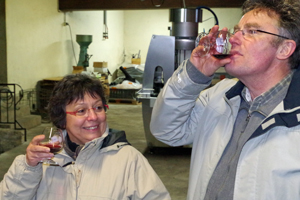Why age wine?
Once the grapes arrive in the chai and are put into the vats, the fermentation process begins naturally thanks to the yeast cells that are present in the grapes. This stage finishes when all of the sugar has been transformed into alcohol. If you taste the wine at this time, unless you are a trained professional, you will be disappointed because the wine is still very hard and closed, and therefore difficult to enjoy.
What role do the barrels play?
A barrel is a wooden recipient, made out of staves which are bowed and held in place by metal rings. They have been used for over 2000 years, at first to simply store and transport wine, but they are now used primarily for the ageing of wine, and other alcoholic products. Wine is no longer stored indefinitely in barrels, as once the ageing process has finished, it is bottled for storing.
How does a barrel bring structure to a wine? The wood from which it is made is a natural product, and allows a tiny amount of air to pass through the barrel, allowing it to breathe! That brings oxygen to the wine and makes the wine fuller and more rounded.
And what about the aromas and tannins? As the wine is in constant contact with the wood of the barrel, a tiny amount of particles from the wood dissolve into the wine, and transfer some aromas to the wine that vary according to the type of wood and the way in which the barrel was heated, or toasted, when being made. Tannins are also present in wood as within wine, and when put into contact with one another, they combine to give a more delicate structure.
How are barrels made?
The foundation for a good barrel is the wood, and in most cases is made of oak. Their trunks are first of all split and dried for several years. Then they are split again to create the staves. These are placed in a circle in a first metal ring, and heated so as to make the curve. The heating can be done by burning them, by using hot water, or steam.
Then the staves have another belt applied and another circle is fixed at the other end. One of the staves has a hole put in it and the water and air tightness is tested. The barrel is also heated a last time to change its chemical composition and bring the desired aromas that are wanted for the wine.
The aromas and the structure brought to the wine by ageing it in barrels can have a marked difference on the wine, as the clients of the Gourmet Odyssey Vinification Experience days can attest to! Why not join us for your own Wine Experience?
Related articles
The role of vats, barrels and other types of container in making wine



